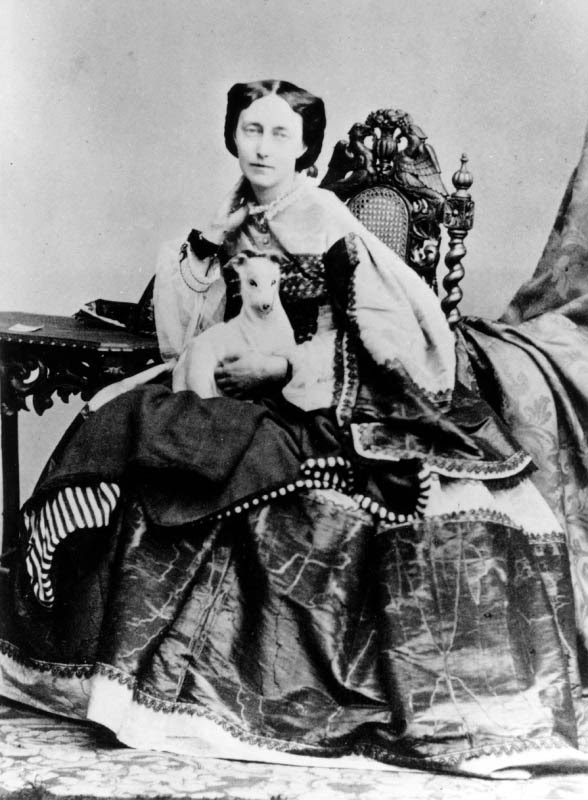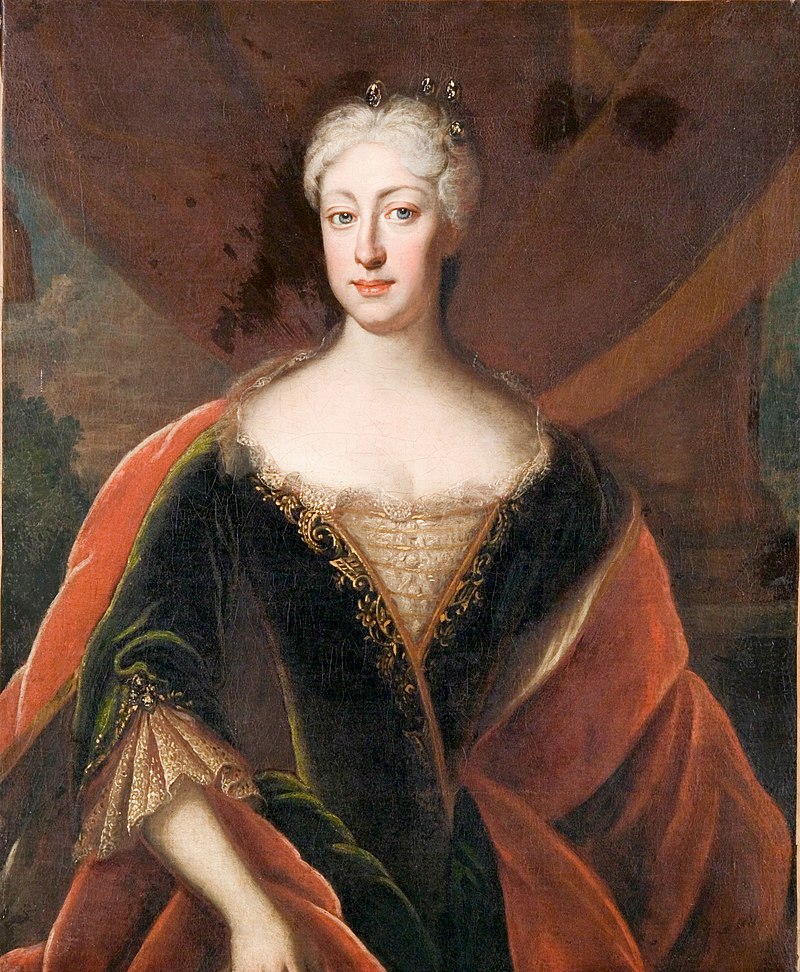© Unofficial Royalty 2023

Olga Nikolaevna of Russia, Queen of Württemberg; Credit – Wikipedia
September 11, 1699 – Birth of Anna Maria of Liechtenstein, Princess of Liechtenstein, wife of first cousin Josef Wenzel I, Prince of Liechtenstein, in Vienna, then in the Archduchy of Austria, now in Austria
The daughter of Anton Florian, Prince of Liechtenstein, in 1717 Anna Maria first married her cousin Count Johann Ernst of Thun-Hohenstein, from her mother’s family but he died six months later, on March 20, 1717, Johann Ernst died at the age of twenty-three. In 1718, Anna Maria married her first cousin Josef Wenzel I, Prince of Liechtenstein. The couple five children who all died in childhood. Anna Maria predeceased her husband dying on January 20, 1753, in Vienna, Austria, aged 53.
Unofficial Royalty: Anna Maria of Liechtenstein, Princess of Liechtenstein
September 11, 1822 – Birth of Queen Olga of Württemberg, wife of King Karl I of Württemberg, born Grand Duchess Olga Nikolaevna of Russia at the Anichkov Palace in St. Petersburg, Russia
The daughter of Nicholas I, Emperor of All Russia, Olga Olga met her future husband, Crown Prince Karl of Württemberg, while both were in Palermo, Kingdom of the Two Sicilies, now in Italy. They were married in a lavish ceremony at the Peterhof Palace in St. Petersburg, Russia, on July 13, 1846. They had no children of their own, but in 1863, took in Olga’s niece, Grand Duchess Vera Konstantinovna, the daughter of Olga’s brother Konstantin. From the time she arrived in Württemberg, Olga threw herself into charity work, focusing on the education of girls, and helping wounded soldiers and handicapped people. After becoming Queen in 1864, she continued to support these, and many other causes, earning her the utmost respect and devotion of the people of Württemberg.
Unofficial Royalty: Olga Nikolaevna of Russia, Queen of Württemberg
September 11, 1853 – Birth of Katharine Schratt, confidante of Franz Joseph I, Emperor of Austria, in Baden bei Wien, Austria
In December 1873, Emperor Franz Joseph of Austria and his wife Empress Elisabeth attended a gala performance of Shakespeare’s The Taming of the Shrew at the Stadttheater in Vienna, Austria. No one could have foreseen that Katharina Schratt, the actress playing the female lead role, whom Franz Joseph saw for the first time that evening, would become an important person in his life. Katharina had a long-standing private relationship with Franz Joseph I, Emperor of Austria but the exact nature of their relationship is unclear. Some believe that Katharina and Franz Joseph were lovers while others believe that their relationship was platonic and that Franz Joseph, whose wife was emotionally distant from him and fled from him as well as her duties at court by frequent traveling, needed someone to support him emotionally. Franz Joseph also had to deal with the violent deaths of relatives. Certainly, the emotional support of Katharina helped Franz Joseph to deal with all these tragedies. Katharina always maintained the strictest discretion regarding her relationship with Franz Joseph.
Unofficial Royalty: Katharina Schratt
September 11, 1921 – Death of Prince Louis of Battenberg, Marquess of Milford Haven, at the Naval & Military Club in London, England; buried in the grounds of St Mildred’s Church in Whippingham, Isle of Wight, England
Louis married Victoria of Hesse and by Rhine, a granddaughter of Queen Victoria. They were the maternal grandparents of Prince Philip, Duke of Edinburgh. Despite his German roots, Louis became a naturalized British subject at the age of 16 when he joined the British Royal Navy, where he would spend his entire career. He reached the rank of Admiral and was made First Sea Lord. On September 11, 1921, while staying at the Naval & Military Club in London, England, Louis fell ill. While his wife was out at a pharmacy picking up prescriptions for him, Louis suffered a heart attack and died at the age of 67.
Unofficial Royalty: Prince Louis of Battenberg, Marquess of Milford Haven
September 11, 1937 – Birth of Queen Paola of Belgium, wife of former King Albert II of Belgium born Paola Ruffo di Calabria in Forte dei Marmi, Tuscany, Italy
In 1958, Paola met her future husband Albert, Prince of Liège, the future King Albert II, at the installation of Pope John XXIII in Rome. Both Paola and Albert attended a reception at the Belgian Embassy where they were introduced. The following year, their engagement was announced and the couple married on July 2, 1959, at St. Michael and St. Gulda Cathedral in Brussels, Belgium. They had three children. On July 21, 2013, after nearly 30 years on the throne, King Albert II abdicated in favor of their eldest son Philippe. The couple continues to reside at Chateau Belvedere, located within the Royal Park at Laeken, Brussels, Belgium.
Unofficial Royalty Queen Paola of Belgium
September 11, 1947 – Death of Alice Keppel, mistress of King Edward VII of the United Kingdom, in Bellosguardo, Italy; buried at the Cimitero Evangelico agli Allori in Florence, Italy
Alice Keppel was the mistress of King Edward VII from 1898 until his death in 1910. Through her daughter Sonia, she is the great-grandmother of Camilla, Duchess of Cornwall. Throughout Edward VII’s reign, Alice remained one of his closest and most valued companions and advisors and maintained the utmost level of discretion and privacy. Alice even gained the favor – albeit minimally – of Alexandra, the Princess of Wales who had long ago accepted her husband’s indiscretions and appreciated Alice’s discretion. When her husband was on his deathbed, Alexandra sent for Alice Keppel and arranged for her to see the king during one of his periods of consciousness.
Unofficial Royalty: Alice Keppel, mistress of King Edward VII of the United Kingdom
September 11, 1966 – Birth of Crown Princess Akishino of Japan, wife of Crown Prince Akishino of Japan, born Kiko Kawashima at Shizuoka Saiseikai General Hospital in Suruga-ku, Shizuoka, Japan
Kiko met Prince Akishino, the second son of Emperor Akihito, while they were both undergraduate students at Gakushuin University in Tokyo. He first proposed to her in 1986. Their engagement was announced in 1989 and the couple married in 1990. Kiko was only the second commoner to marry into the Japanese Imperial Family. Her mother-in-law Empress Michiko was the first. Upon the abdication of his father Emperor Akihito and the accession of his Emperor Naruhito, Kiko’s husband became Crown Prince. The couple had two daughters and one son, Prince Hisahito, who will likely become Emperor of Japan sometime in the future.
Unofficial Royalty: Crown Princess Akishino of Japan
This article is the intellectual property of Unofficial Royalty and is NOT TO BE COPIED, EDITED, OR POSTED IN ANY FORM ON ANOTHER WEBSITE under any circumstances. It is permissible to use a link that directs to Unofficial Royalty.












